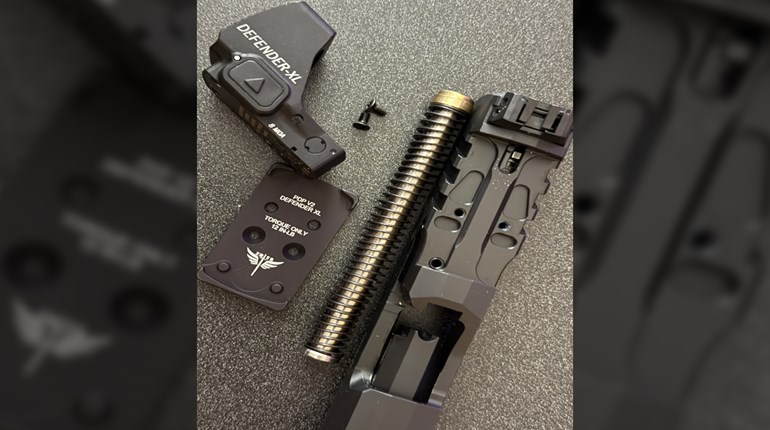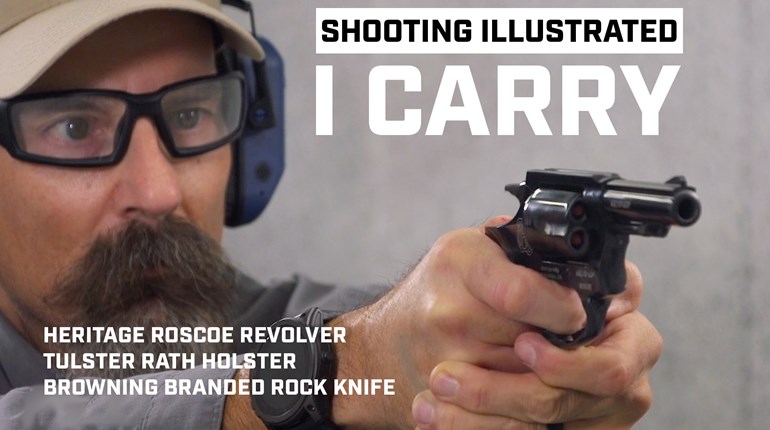
Statistics compiled by the FBI indicate that, during a self-defense situation where the victim's gun must be fired, it takes an average of three rounds to survive the incident. That statistic is, no doubt, comforting to those who carry the ubiquitous five-shot .38 Special compact snubnose revolver for personal protection.
Unfortunately, those who depend upon statistics to assure their survival stand an excellent chance of becoming a statistic.
That “three-shot average” is just that: an average. Some situations required less, and some took more. For those unfortunate enough to be caught up within that second group, the ability to quickly reload a snubnose revolver and get it back into action can be critical.
Reloading a double-action revolver is simple: Open the cylinder, hit the ejector rod to expel the empties and then refill the chambers. However, the key to getting new rounds into a revolver quickly is in getting the fired cases out quickly. That is not a significant problem with revolvers having a 4-inch, or longer, barrel. The length of the ejector rod on a 4-inch barrel allows a solid stroke that normally kicks the empties out. At worst, only about 1/16 inch of the empties hang up in the chambers, so it might take a few flicks of a finger to clear them.
Revolvers with 2- to 3-inch barrels lack that ejector rod length. They are only able to push about 60 percent of the cases out of the cylinder, leaving about 3/8-inch of the fired cases clinging to the inside of the chambers. If gravity doesn't finish the ejection, finger flicks won't work. The cases will have to be pulled out by hand, which greatly slows the reloading process. In addition, gravity is severely stressed because the inevitable post-manufacture machine marks within the chambers grab powder fouling, which forms a sticky coating that clings to the expanded fired cases.
Competitive revolver shooters are well aware of this. Even with their longer ejector rod stroke, one of the first steps they do in tuning their competition guns is to polish each individual chamber to remove all machine marks to help speed ejection. That's also a wise move for snubby owners.
Polishing individual chambers is a simple job for a competent gunsmith, although it's not an inexpensive one. It's also a job that gun owners can do themselves for considerably less money. Brownells is a leading supplier of gunsmithing parts, and the company has a Cylinder Polishing System (which is the same one many gunsmiths use). Consisting of a chamber-sized semi-soft hone covered with silicon carbide beads, it chucks into a variable speed drill and is combined with a honing oil, which Brownells can supply. The hones are available in calibers .32 S&W, .38 Special, .41 Mag., .44 Mag., .45 ACP, and .45 Colt.
It's a simple operation, and the revolver does not have to be disassembled. The chambers are coated with honing oil, and the hone inserted partway into each chamber to position it. The drill speed is then slowly increased while the hone is moved smoothly back and forth to polish out the machine marks. This writer has done this on a number of revolvers, and it takes little time. It is a bit messy, but the honing oil can be quickly removed with Brake Cleaner spray and a few dry patches.
There is, however, one major caveat. Don't be heavy-handed!
If the the hone is pushed too far forward into the chamber, it will contact the chamber throats. They may then be altered and the accuracy of that chamber can be seriously degraded. But there is no need to go that far into the chambers. All that requires polishing is the rear two-thirds of the chamber. Even the short ejector rod stroke on a snubnose revolver will push the cases past that point. Once they hit the polished section, gravity will work, and a firm stroke on the ejector rod will clear the cases.

Once the fired cases are cleared from the gun, there are several ways to quickly reload a snubnose revolver, and pulling loose rounds out of a pocket is a poor choice.
Speedloaders are readily available that hold five rounds and can quickly recharge an empty gun.
The HKS line of speedloaders uses a gravity feed. The rounds are inserted into the loader and the rear knob twisted to secure them within the loader. Insert the rounds into the chambers with the gun held at a downward angle, twist the knob, and the rounds drop into the chambers. The Safariland Comp 1 holds five rounds and uses spring pressure to drive them into the chamber. Both are proven units that carry easily in a pocket with virtually no chance of a premature cartridge release. They'll recharge an empty cylinder quickly. That's both a positive and a negative.
Speedloaders are five rounds at a time: All or nothing. If a gun owner has to fire several rounds and then is able to retreat to a place that might be temporarily safe, replacing those few fired rounds is a good idea. Stripper clips are an excellent choice here.
The Bianchi Speed Strip or the Tuff QuickStrip are rubber spring clips that hold six rounds. To use, insert one or two rounds into the empty chambers, lift up on the strip and the rounds release to fall into the chambers. They can be used to recharge an empty cylinder or just replace a few fired rounds. To top off a partially expended cylinder, open it and point the gun at a very slight downward angle. Push slowly up on the ejector rod to lift all rounds, then release it. The loaded rounds will drop back into the chambers while the fired cases will remain partially ejected and extended. They can be quickly picked out. The strip can then easily refill those chambers without the need to dump any remaining live rounds.
As with any shooting technique, these need to be practiced, whether using speedloaders or strips. However, it's worth the time spent to develop the skills to rapidly reload a snubnose revolver.
Statistics may comfort some in a personal-protection incident, but a fully loaded handgun is much more comforting.



































